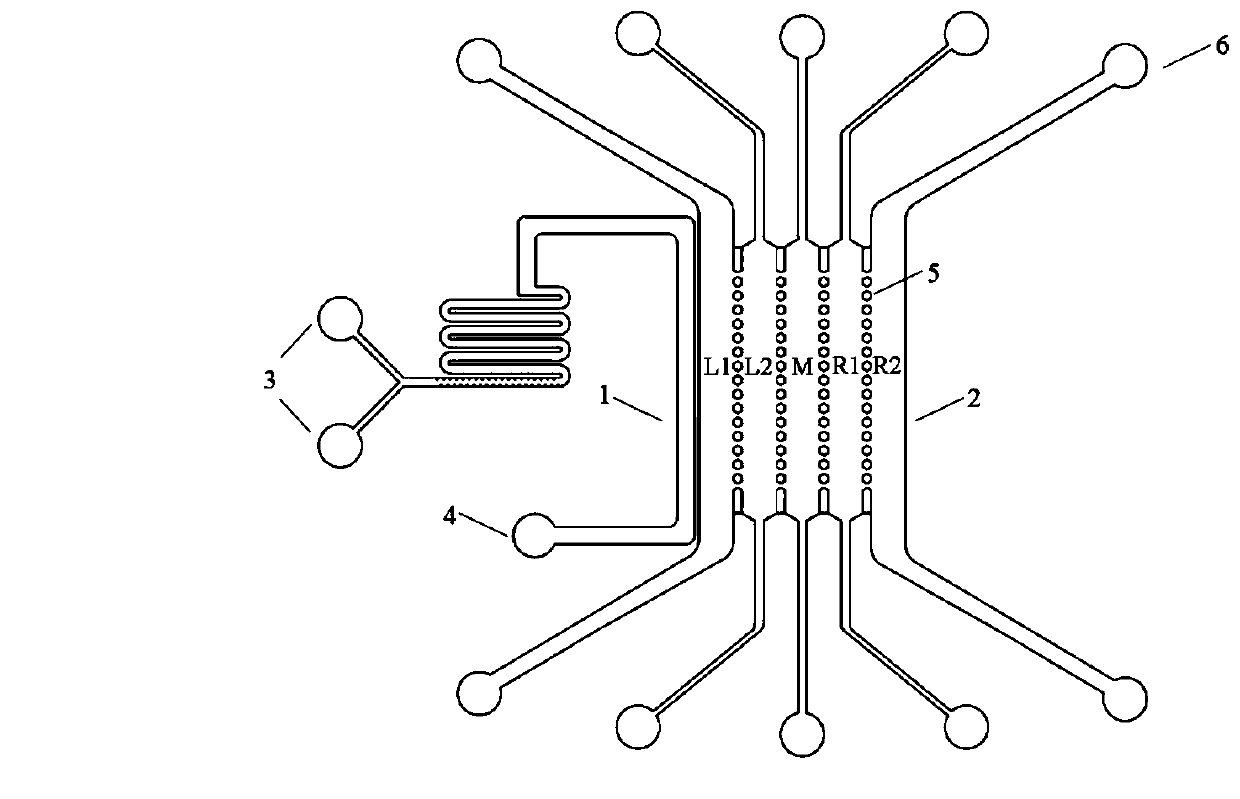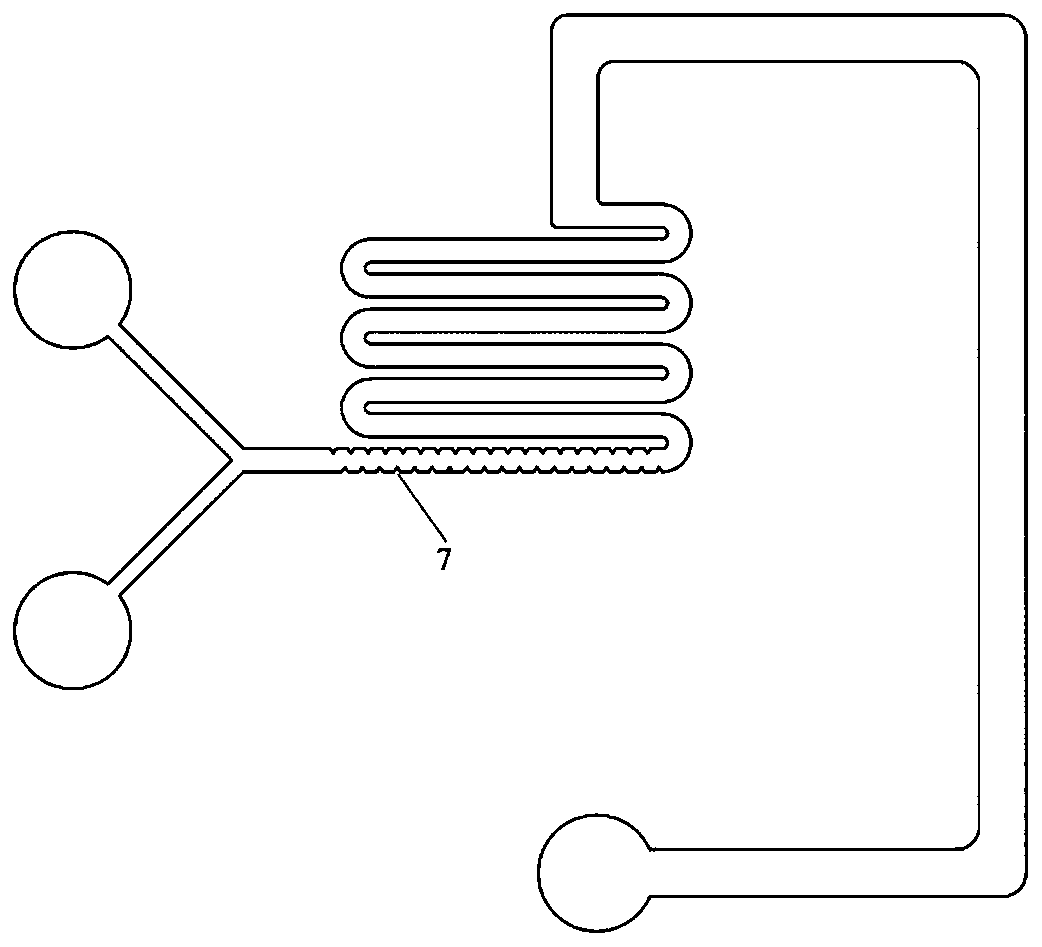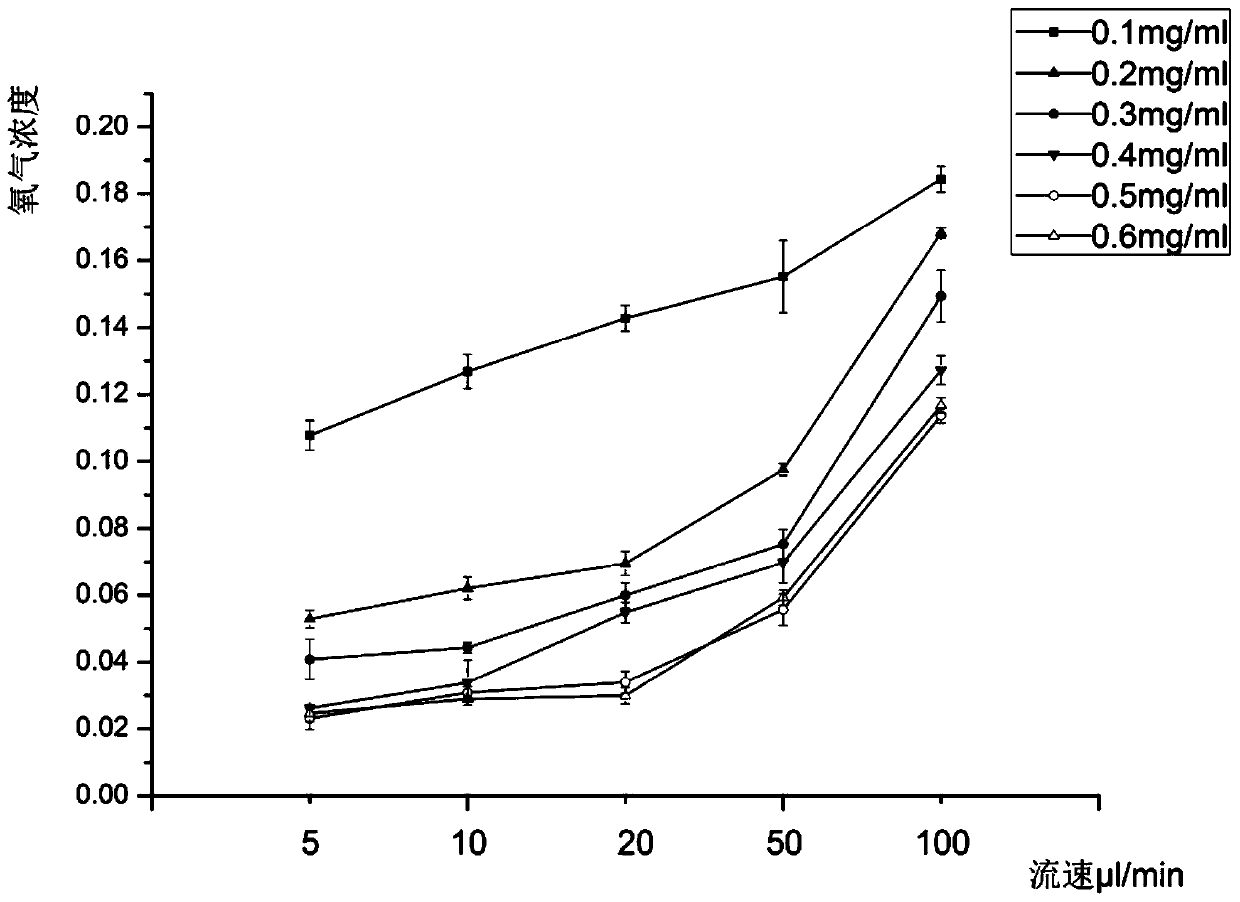Cell co-culture microfluidic chip capable of realizing oxygen concentration gradient, and application thereof
A microfluidic chip, cell culture technology, applied in tissue cell/virus culture devices, specific-purpose bioreactors/fermenters, enzymology/microbiology devices, etc., can solve the problem of neglecting stromal cells, etc. Various cultivation methods, simple operation and good repeatability
- Summary
- Abstract
- Description
- Claims
- Application Information
AI Technical Summary
Problems solved by technology
Method used
Image
Examples
Embodiment 1
[0038] Such as figure 1 , 2 As shown, a microfluidic chip that can realize oxygen concentration gradient level cell co-cultivation includes a layer of substrate made of PDMS polymer and glass material, and the PDMS layer is composed of hypoxic channels and cell culture units; hypoxic channels It includes two liquid inlets and one liquid outlet, the liquid inlet is used to mix sodium hydroxide and pyrogallol, an oxygen gradient is generated in the area around the channel, and the remaining liquid is discharged from the liquid outlet; the cell culture unit consists of five parallel and Composed of connected channels, there are two reservoirs with a diameter of 3mm at both ends of each channel, a total of ten, used to store cell culture fluid, between the channels is a regular hexagonal micro-column array 5 with a side length of 75 μm , used to create surface tension in the passing liquid so that it can be kept in a channel, but liquid can be manually injected into the reservoir...
Embodiment 2
[0040] Determination of the change trend of oxygen concentration when different concentrations of pyrogallol are mixed with sodium hydroxide at different flow rates.
[0041] (1) Use the fluorescence method to measure the oxygen content in the chip: use tris(4,7-biphenyl-1,10-phenanthroline) ruthenium dichloride as the indicator, the fluorescence of this substance will be reduced due to the presence of oxygen Quenching, and the higher the oxygen concentration, the higher the quenching degree, so it can be used as an indicator for detecting the oxygen content in the chip. The maximum absorption wavelength of the indicator is 455nm, and the maximum emission wavelength is 613nm.
[0042] Dissolve the indicator in absolute ethanol to make a 200 μM solution, use a pipette gun to inject into the cell culture unit, and use a fluorescence microscope to photograph its fluorescence intensity.
[0043](2) Calculation of oxygen concentration and fluorescence intensity: use the Stern-Volm...
Embodiment 3
[0046] Co-cultivation of mouse hepatoma cells and hepatic stellate cells in the chip: Before the experiment, the chip was pretreated, that is, the sterilized chip was placed in an ultra-clean bench, and the chip was coated with 10 μg / mL fibronectin. L1, M and R2 channels for 1 hour to promote cell attachment and growth. Digest mouse hepatoma cells Hepa1-6 with a cell density of 80%-90% in a culture flask using trypsin, place in a 1.5mL centrifuge tube, and resuspend the cells in a high-speed centrifuge to make a volume of 3×10 6 cells / mL suspension, similarly, mouse hepatic stellate cell JS-1 was configured into 2×10 6 individual / mL suspension. Use a pipette gun to inoculate the resuspended Hepa1-6 cells in the L1 and R2 channels, inoculate the JS-1 cells in the M channel, and place the chip in the incubator for 4 hours. Cells are removed and fresh medium is added to allow the cells to grow normally, e.g. Figure 4 As shown, Hepa1-6 cells are on the left, and JS-1 cells are...
PUM
 Login to View More
Login to View More Abstract
Description
Claims
Application Information
 Login to View More
Login to View More - R&D
- Intellectual Property
- Life Sciences
- Materials
- Tech Scout
- Unparalleled Data Quality
- Higher Quality Content
- 60% Fewer Hallucinations
Browse by: Latest US Patents, China's latest patents, Technical Efficacy Thesaurus, Application Domain, Technology Topic, Popular Technical Reports.
© 2025 PatSnap. All rights reserved.Legal|Privacy policy|Modern Slavery Act Transparency Statement|Sitemap|About US| Contact US: help@patsnap.com



